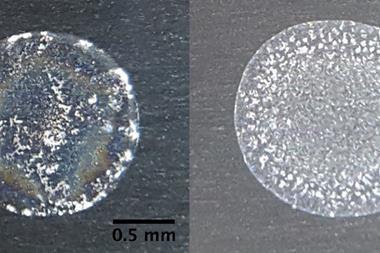US researchers have taken advantage of the so-called coffee-ring effect to move liquids around using only heated gold nanoparticles.
US researchers have taken advantage of the so-called coffee-ring effect to move liquids around using only heated gold nanoparticles.
Nanotechnologists from the University of California at Berkeley, led by Luke Lee, used the effect to transport water on a microscopic scale without the use of complex valves or pumps.
The coffee-ring effect was discovered by researchers at the University of Chicago investigating why coffee cups leave a characteristic ring on flat surfaces. The phenomenon couldn’t be explained by standard theories of solute transport, but turned out to be the result of liquid evaporating around the edge of a droplet. The evaporated liquid is replenished by liquid from within the drop, so the outer edge doesn’t move.
Lee’s team added gold nanoparticles to a droplet of water and shone a weak beam of light at the outer edge of the water. This caused the nanoparticles to heat up, which in turn caused some of the water at the outer edge to evaporate. Water from the interior responded in accordance with the coffee-ring effect and moved to the outer edge, but the evaporated water quickly condensed and re-joined the bulk of the water, moving the outer edge forward.
Lee and colleagues found that by constantly heating the outer edge they could move liquids, either as free-standing droplets or constrained in microscopic channels, at speeds of up to 50?m/second. Water could be moved around corners into side channels using the technique, and the researchers could merge different liquids from different channels and even transport living cells in the liquids. Jon Evans
References
et alNature Materials (DOI: 10.1038/nmat1528)







No comments yet